 As much as we adore wildlife, we detest the sight of a deer herd casually grazing in our garden, or squirrels frolicking about the lawn with Crocus bulb-bulging cheeks. Our garden is not intended to be an all-you-can-eat buffet, except for the happily bumbling bees, butterflies and hummingbirds.
As much as we adore wildlife, we detest the sight of a deer herd casually grazing in our garden, or squirrels frolicking about the lawn with Crocus bulb-bulging cheeks. Our garden is not intended to be an all-you-can-eat buffet, except for the happily bumbling bees, butterflies and hummingbirds.
Tulips and Lilies (Not)
It is sad but true that Tulip and Lily flowers are favored deer bon-bons. Deer may patiently wait to dine until spring buds have puffed into full glory, or until the flowers open. On a shorter scale, rabbits may munch on developing stems and foliage, and on the flowers of low varieties.
 Garden Surprise Parties
Garden Surprise Parties
Chipmunks, voles, gophers and prairie dogs use underground tunnels to snack on tasty roots and may even tug on, or munch on, the bulbs themselves. Squirrels and chipmunks may dig up freshly planted bulbs, particularly Crocus, and replant them for surprise spring gardens. Word has it that squirrels do not favor Crocus tommasinianus varieties, but we haven't had it confirmed by actual squirrel testimony. Grub-eating moles disrupt gardens and plantings but normally just go after grubs. Since lazy, vegetarian voles use the mole tunnels, it is smart to apply grub-proof applications on lawns and gardens to help minimize destructive vole behavior.
So Many Resistant Flower Bulbs
We needn't despair since there is a vast assortment of flower bulbs to which deer normally turn up their noses. When animals are starving, they may nibble experimentally on anything. Deer may even eat sharply serrated holly leaves. Here is a general list of the types of flower bulbs that they do not normally eat. For a specific list of individual varieties, go to our special home-page Deer-Resistant Varieties search.

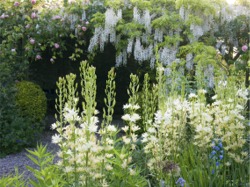 Allium
Allium
Camassia
Corydalis solida
Chionodoxa
Dutch Iris
Eranthis
Eremurus
Erythronium
Fritillaria
Galanthus
Geranium tuberosum
Herbaceous Peonies 
 Hyacinthoides hispanica
Hyacinthoides hispanica
Hyacinthoides non-scripta
Hyacinths
Ipheion
Leucojum
Muscari
Narcissi
Ornithogalum
Oxalis adenophylla
Puschkinia libanotica
Scilla
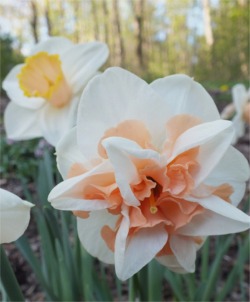 On Guard, Marauding Varmints
On Guard, Marauding Varmints
Like most of us, if you can't live without Tulips in the spring, and Lilies in the summer, you may want to try to prevent animals from being tempted by them.
The most fail-safe way to protect gardens from deer is to install fences at least 8' high. This is also good for human beings, to reduce the possibility of deer ticks and Lyme Disease. One may also try to scare deer and varmints away by walking dogs around areas with delicious plant material, or spray commercial solutions of scary predator urine. Some gardeners report luck with mulching their prized beds with dog or human hair.
To protect tasty Tulip and Lily buds and flowers from being eaten, apply either a commercial repellent spray or a home-brewed concoction. This is normally done after each rainfall to refresh its foul smell and taste. In the Hosta Journal, Joyce Descloux reports on a home-brewed mix she found to be effective: "In a kitchen blender, drop two old unshelled eggs, one large clove of garlic, a loose cupful of green onion tops, and two cups of water. Process to liquefy about two minutes. Pour into a wide-mouthed quart jar; stir in two tablespoons of chili pepper. Add an old piece of deodorant soap and fill with water." She keeps the mix unrefridgerated so it gets as foul and smelly as possible. She recommends to drip it on to plagued plants from a big old sponge while wearing protective garden gloves.
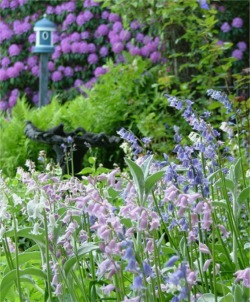 Planting Tricks
Planting Tricks
To deter underground rodents, many plant yummy bulbs in fine gage wire cages, or surround bulbs with crushed shells beneath and around them. (Make sure that wire enclosures are submerged to the proper depth and that soil is tamped down around and above the cage to prevent poor water drainage.)
Some people have planted moth balls around bulbs to deter rodents, but we worry that they may hurt the soil and bulbs as they decompose. Others have told us that they plant Bounce drier sheets around bulbs. We don't recommend moth balls or drier sheets, or anything that could possibly burn and stunt root growth and bulb performance.
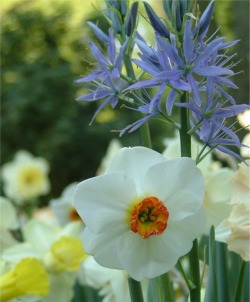 Go with Mother Nature
Go with Mother Nature
We want to help keep the process of gardening fun with the best possible outcomes. Because we think that Mother Nature always wins, we like to do things with as little tedious work and as naturally as possible. One of the best ways to deter or fool deer and rodents is to interplant unappetizing bulbs as a disguise around yummy bulbs. An example would be to plant Tulip bulbs within a defensive perimeter of Allium, Fritillaria or Narcissi.
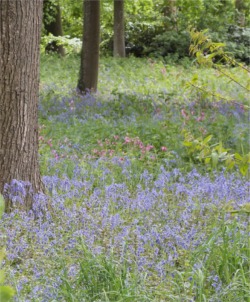 Interplant with Deer- and Rodent-Resistant Plants and Shrubs
Interplant with Deer- and Rodent-Resistant Plants and Shrubs
Or, you could plant Tulip and Lily bulbs among deer- and rodent-resistant annual and perennial plants from among the list below. Most of these perennials may be secured at a good local garden center or nursery. Those in bold may be grown from seed and secured through our sister company, Kitchen Garden Seeds.
Achillea (Yarrow)
Aconitum (Monkshood)
Agastache (Hyssop)
Ajuga (Bugleweed)
Alchemilla (Lady's Mantle)
Antirrhinum (Snapdragons)
Aquilegia (Columbine)
Armeria (Sea Thrift)
Artemesia (Wormwood)
Aruncus (Goatsbeard) Asarum (Ginger)
Asarum (Ginger)
Asclepias (Butterfly Weed)
Astilbe (False Spirea)
Baptisia (False Indigo)
Bergenia (Heartleaf Bergenia)
Brunnera (Siberian Bugloss)
Calendula (Pot Marigolds)
Celosia (Cock's Comb)
Centaurea (Cornflower)
Centranthus (Red Valerian)
Cerastium (Snow in Summer)
Ceratostigma (Plumbago)
Chelone (Turtlehead)
Cimicifuga (Bugbane)
Cleome (Spider Flower)
Coleus
Convallaria (Lily of the Valley)
Coreopsis (Tickseed)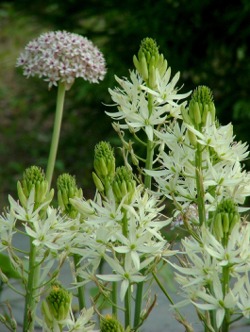 Dahlia
Dahlia
Delosperma (Ice Plant)
Delphinium (Larkspur)
Dianthus (Hardy Carnations)
Dicentra (Bleeding Heart)
Digitalis (Foxglove)
Echinacea (Coneflower)
Echinops (Globe Thistle)
Epimedium (Barrenwort)
Eschscholzia (California Poppy)
Euphorbia (Spurge)
Ferns
Filipendula (Meadowsweet)
Gaillardia (Blanket Flower)
Gallium (Sweet Woordruff)
Gaura (Wand Flower)
Gypsophila (Baby's Breath)
Helichrysum (Strawflower)
Helleborus (Lenten Rose)
Hypericum (Saint John's Wort)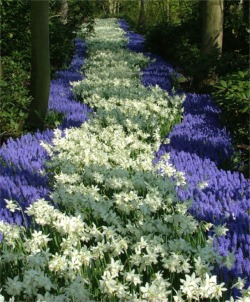 Iberis (Candy Tuft)
Iberis (Candy Tuft)
Iris
Kniphofia (Red Hot Poker)
Lamium (Dead Nettle)
Lavandula (Lavender)
Leucanthemum (Shasta Daisy)
Liatris (Dead Nettle)
Ligularia (Golden Ray)
Limonium (Statice)
Liriope (Lily Turf)
Lobelia (Sweet Alyssum)
Lupinus (Lupine)
Monarda (Bee Balm)
Myosotis (Forget-Me-Not)
Nepata (Catmint)
Nicotiana (Flowering Tobacco)
Oenothera (Evening Primrose)
Oregano Ornamental Grass
Ornamental Grass
Pachysandra (Spurge)
Papaver (Poppy)
Perovskia (Russian Sage)
Penstemon (Beard Tongue)
Phlox subulata (Creeping Phlox)
Platycodon (Balloon Flower)
Poleonium (Jacob's Ladder)
Primula (Primrose)
Pulmonaria (Lungwort)
Rodgersia (Rodger's Flower)
Rosemary
Rudebeckia (Black-Eyed Susan)
Salvia (Sage)
Scabiosa (Pincushion Flower)
Solidago (Goldenrod)
Stachys (Lamb's Ear)
Tagetes (Marigolds)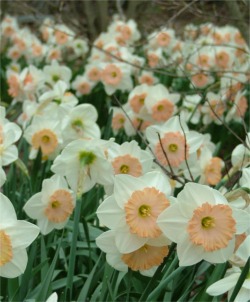 Tanacetum
Tanacetum
Teucrium (Germander)
Thalictrum (Meadow Rue)
Thymus (Thyme)
Tiarella (Foamflower)
Veronica (Speedwell)
Vinca minor (Myrtle)
Zinnias
Sometimes, it also helps to plant tasty flower bulbs among deer- and rodent-resistant shrubbery.
Bamboo
Berberis (Barberry)
Budleaia (Butterfly Bush)
Buxus (Boxwood)
Callicarpa (Beautyberry)
Caryopteris (Blue Mist)
Cephalanthus (Buttonbush)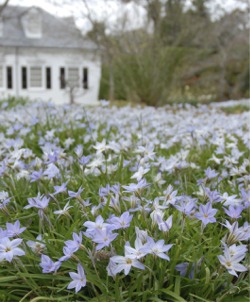 Cephalotaxus (Japanese Plum Yew)
Cephalotaxus (Japanese Plum Yew)
Clethra (Summersweet)
Forsythia
Hibiscus (Rose of Sharon)
Hydrangeas
Itea (Virginia Sweetspire)
Kalmia (Mountain Laurel)
Myrica (Bayberry)
Pieris (Andromeda)
Potentilla (Bush Cinquefoil)
Prunus (Cherry Laurel)
Pyracantha (Firethorn)
Spiraea
Syringa (Lilac)
Weigelia
Yucca




